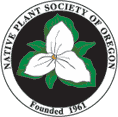2015 Fellows
Frances Stilwell

Frances Stilwell was born in Cincinnati, Ohio. She attended Smith College in Northampton, Massachusetts, and received a BA in botany from the University of Cincinnati, specializing in taxonomy of plants of southwestern Ohio. She received an MS in botany/biophysics at the same institution under a Public Health Service grant in radiation biology. She worked two years in biophysics for the research group at the UC Medical School. She came to Oregon in 1961 and eight years later (1969) began a four year study in ethology (the science of animal behavior) at the University of Oregon. This research was published in Science, Nature, and eventually (2010) by Cambridge University Press. She was employed by the Oregon Department of Fish and Wildlife, Bureau of Land Management, and Oregon State Department of Forestry. In 1981, she left science and devoted her time to art.
Her artwork won the Curator's Choice Award twice at the Howland Open Yearly Exhibition at the Corvallis Art Center, and has been juried into two other exhibitions: All Around Oregon and Art About Agriculture (the latter at Oregon State University LaSells Stewart Center's Guistina Gallery). In 2000 she illustrated a book about one of Dr. Helen Gilkey’s plant collectors. Come Walk Through Spring with Bessie Gragg Murphy was selected by the Salem Statesman-Journal as one of the top ten books reviewed by them in 2002, the first time a self-published book had been so honored. Her second book, Oregon’s Botanical Landscape: an Opportunity to Imagine Oregon before 1800, is a compilation of her art in pastels and watercolor of botanical landscapes in each of the ecoregions of Oregon. Also self-published, the purpose of the book was to share “how to educate ourselves about our natural world, to slow down and stop, to consider colors, shapes, and shadows.” This book grew from Stilwell’s solo exhibit of 72 paintings in 2011 at the Benton County Historical Society and Museum's Moreland Gallery. She used a grant from Benton County Cultural Commission and other donations to print copies of the book to distribute among Benton County schools and libraries.
Stilwell has been a member of the NPSO since the mid-1980s and has served as secretary in the Corvallis Chapter and as a Director-at-Large on the State Board of Directors. Stilwell’s primary contribution to native plant appreciation in Oregon has been through her artwork to create opportunities for students and the public to share a special sense of our Oregon home.--Be Davison Herrera and Rana Foster, Corvallis Chapter.
Esther McEvoy

Esther Helen Gruber McEvoy earned a BA in Art from Lewis and Clark College in 1974 and a BS from Portland State University (PSU) in 1978. During the late 1970s she worked as a teaching assistant in two locations: a botany class at PSU and field botany and soil invertebrate classes at the Malheur Field Station. While at PSU she served as a lab technician for the Oregon Department of Environmental Quality for four years on a project monitoring the effects of DDT on soil invertebrate in northeastern Oregon. During the field seasons of 1979 and 1980 she worked as a range conservationist (actually botanist) for the Burns District of the Bureau of Land Management (BLM) conducting rare plant inventories at Diamond Craters, a special management area of recent volcanic activity. Her work helped with the establishment of Diamond Craters as an Outstanding Natural Area. In 1979, Esther (along with fellow student scientists at OSU) obtained a National Science Foundation grant to study the ecology of the Alvord Dunes, which lie south of Steens Mountain. Esther collected soil invertebrate samples from the desert shrub communities and analyzed them at OSU in Corvallis during the fall and winter months. It was during this time that she met her future husband, Peter McEvoy, in the Entomology Department at OSU. During the field season of 1981, Esther worked for the Willamette National Forest searching for old growth in the Coast Range with John Christy.
Esther, along with fellow botanists at OSU, founded the Corvallis Chapter of NPSO in 1981. Starting in the spring of 1983 she worked as a field assistant for two field seasons on a research project to burn and re-vegetate the native wet prairie at William L. Finley National Wildlife Refuge with Dr. Bob Frenkel, OSU. They found that some of the shrubs invading the prairie thrived on burns, especially the roses. Starting in 1985, as NPSO Legislative Committee Chair, she spent two years writing a draft of the State Endangered Species Bill, which was passed in 1987, the culmination of years of hard work by many environmental groups. The Act directed the Oregon Department of Agriculture to monitor and protect the State’s threatened and endangered plants. Over the last twenty years Esther has led many NPSO field trips with Phil Hays and Bob Frenkel to Marys Peak, the highest point in the Oregon Coast Range. The three friends published an article on the Marys Peak Scenic Botanical Area in Kalmiopsis in 2012 (19:21-35).
In 2000 Esther started Willamette Gardens, a native plant nursery that specializes in organically grown native plants from Oregon and neighboring states. Esther donates plant material and time to support the Corvallis Chapter. She recently assisted Benton County to become the first county certified as a National Wildlife Federation backyard habitat area. In addition to her busy life as a small business owner and conservation activist, she and her husband have raised two children, a son and a daughter. She is currently (2015) vice-president of Corvallis Chapter and helps maintain the native plant garden surrounding the Avery House Nature Center at the Corvallis Environmental Center. — Rana Foster, Corvallis Chapter.


